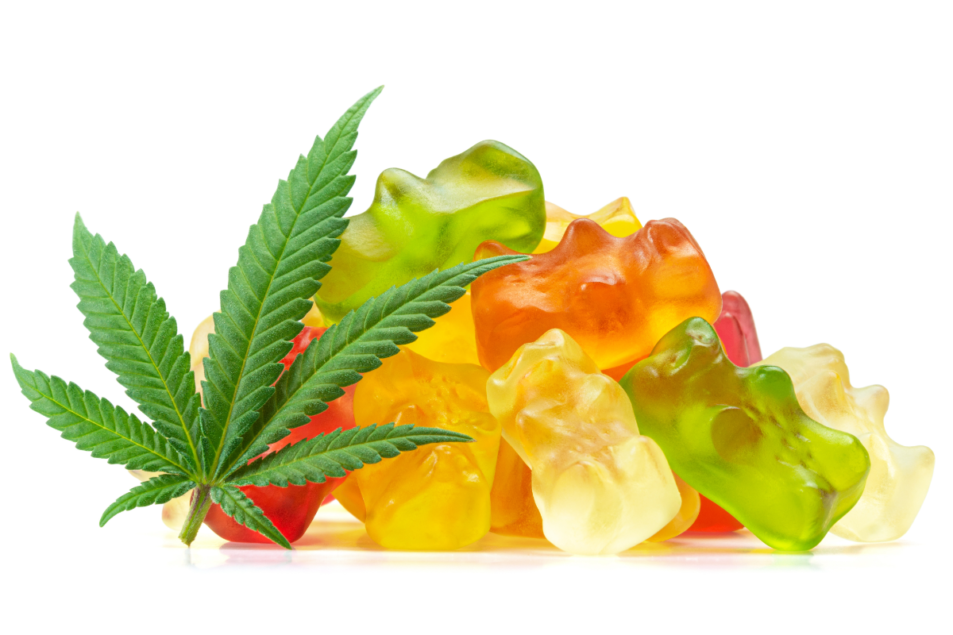In recent years, the cannabis industry has seen a significant evolution with the rise of edible products, particularly gummies infused with cannabinoids like CBD (cannabidiol) and THC (tetrahydrocannabinol). These products have not only reshaped consumer preferences but also sparked innovation in culinary and medicinal applications. This article delves into the dynamics of CBD and THC gummies, exploring their differences, market trends, and the factors driving their popularity.
Understanding CBD and THC
CBD and THC are two of the most well-known cannabinoids found in cannabis plants, each offering distinct effects and applications:
- CBD (Cannabidiol): Known for its therapeutic properties, CBD is non-intoxicating and has gained popularity for its potential benefits in managing pain, anxiety, inflammation, and various medical conditions. It’s commonly derived from hemp, a cannabis variety containing minimal THC.
- THC (Tetrahydrocannabinol): THC is the primary psychoactive compound in cannabis, responsible for the “high” associated with marijuana use. It also has therapeutic properties and is used for both recreational and medicinal purposes, depending on legal regulations.
Market Trends and Consumer Preferences
The market for CBD and THC gummies has expanded rapidly, driven by increasing consumer interest in alternative forms of cannabis consumption. Here are some key trends shaping the market:
- Health and Wellness Trends: Consumers are increasingly seeking natural alternatives for health and wellness, driving the demand for CBD gummies from Incensehigh. These products are often marketed as promoting relaxation, stress relief, and overall well-being without the psychoactive effects of THC.
- Medical Applications: Both CBD and THC gummies are used for medicinal purposes, albeit for different reasons. CBD is favored for its anti-inflammatory and calming effects, making it suitable for conditions like chronic pain and anxiety. THC, on the other hand, is used in higher doses for pain management, nausea relief, and stimulating appetite, particularly in cancer patients undergoing chemotherapy.
- Recreational Use: THC gummies cater to the recreational cannabis market, offering a discreet and convenient way to experience the euphoric effects of marijuana without smoking. These products vary in potency, allowing consumers to choose according to their tolerance levels and desired experience.
Culinary Innovation and Product Diversity
The appeal of gummies lies not only in their cannabinoid content but also in their diverse flavors, shapes, and formulations. Manufacturers have embraced culinary innovation to create products that appeal to a wide range of tastes and preferences:
- Flavor Varieties: CBD and THC gummies come in a myriad of flavors, from traditional fruit flavors to more exotic blends like mango, watermelon, and even herbal infusions. This variety enhances consumer experience and encourages experimentation.
- Formulation Techniques: Advanced extraction and formulation techniques ensure consistent cannabinoid content and bioavailability in gummies. Nano-emulsification, for instance, improves the absorption of cannabinoids in the body, enhancing their therapeutic effects.
- Customization: Some brands offer customizable gummies, allowing consumers to choose specific cannabinoid ratios (CBD
) or flavors tailored to their preferences. This level of personalization enhances consumer satisfaction and loyalty.
Regulatory Landscape and Legal Considerations
The regulatory landscape for CBD and THC gummies varies significantly across regions and countries:
- CBD Legalization: CBD derived from hemp is legal in many parts of the world, provided it contains less than 0.3% THC (as per U.S. regulations). This has facilitated the widespread availability of CBD gummies in health food stores, dispensaries, and online platforms.
- THC Regulations: THC gummies, however, face stricter regulations due to their psychoactive nature. Legalization efforts have expanded in some regions, allowing for recreational and medicinal use, albeit with varying restrictions on potency, packaging, and sales.
- Consumer Safety: Regulatory frameworks ensure product safety, quality, and accurate labeling. Consumers are advised to purchase from reputable brands that adhere to Good Manufacturing Practices (GMP) and provide third-party lab testing results for cannabinoid potency and purity.
Challenges and Future Outlook
Despite their growing popularity, CBD and THC gummies encounter several challenges:
- Education: There’s a need for comprehensive consumer education on cannabinoid effects, dosage guidelines, and potential interactions with medications.
- Standardization: Achieving consistency in cannabinoid dosing and effects remains a challenge due to variations in individual metabolism and product formulations.
- Market Competition: The market for CBD and THC gummies is becoming increasingly competitive, with new brands entering the fray. Differentiation through product quality, transparency, and innovation will be crucial for sustaining market share.
Looking ahead, the future of CBD and THC gummies appears promising with ongoing research, technological advancements, and evolving consumer preferences. As regulatory frameworks continue to evolve, these products are poised to play a significant role in the broader cannabis industry, offering consumers accessible and enjoyable ways to experience the benefits of cannabinoids.


